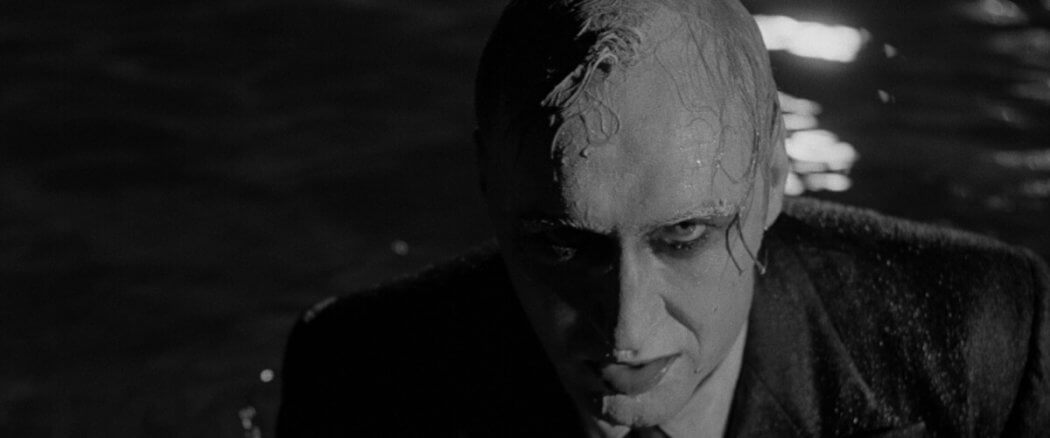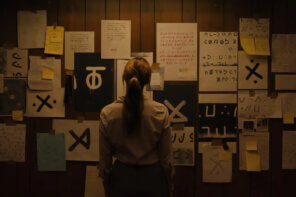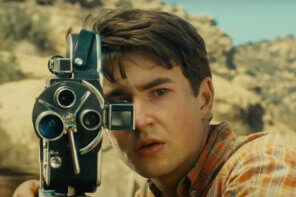Nothing quite agitates an artist like asking to explain their art. Perhaps it is the perceived implication that they didn’t communicate effectively, or that you aren’t willing to fully engage with their work, or that you are only concerned with being right. For the artistic partnership behind Carnival of Souls, the agitation is simply the belief that explanation doesn’t automatically add value. “A lot of things happen that we don’t understand,” director Herk Harvey says in the commentary. “And we haven’t got a critic beside us saying ‘what really happened was this’ and ‘what you think is this’ and I think the same thing is very important to keep in a film.”*
So why write about Carnival, especially as a critic? Maybe it’s simply a reflex of the mind, made in the divine image: ours is not a God of disorder, though our role as caretakers has resulted in that. Both the artist and the critic yearn to establish order, but it may not involve the logic we suppose. “Like the best poetry,” remarks film critic David Cairns, “[Carnival] means what it says. It just doesn’t say what it means.”**
Put Your Soul Into It
We meet Mary Henry (Candace Hilligloss) crammed in a car full of girls, as the driver of which decides to play chicken after being provoked by a car full of boys. Mary is clearly not in the mood for either. Nevertheless, the energy carries all of them onto a bridge, and through stupidity and chance, the girls are bumped against the railing, breaking it and toppling their car into the slow-moving Kansas River.
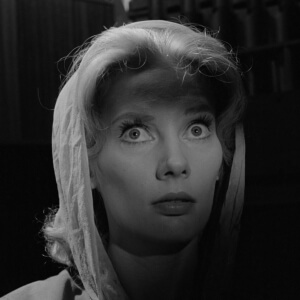 As a local crew searches for the car and police question the boys, Mary emerges from the water, covered in mud and a kind of numbness. Within days, she finds a job in Utah and is loosening herself from Kansas and the incident. The job is an organist, for which she has been training, and to become familiar with the church’s model of the instrument, she visits a local factory. A male employee — who is acquainted just enough with Mary to be both presumptive and inquisitive — comments, “It takes more than intellect to be a musician. Put your soul into it a little, okay?” Mary responds by leaving, but as the employee calls, “stop by and see us the next time you’re in,” she turns. “Thank you, but I’m never coming back.” She won’t have to. It will follow her.
As a local crew searches for the car and police question the boys, Mary emerges from the water, covered in mud and a kind of numbness. Within days, she finds a job in Utah and is loosening herself from Kansas and the incident. The job is an organist, for which she has been training, and to become familiar with the church’s model of the instrument, she visits a local factory. A male employee — who is acquainted just enough with Mary to be both presumptive and inquisitive — comments, “It takes more than intellect to be a musician. Put your soul into it a little, okay?” Mary responds by leaving, but as the employee calls, “stop by and see us the next time you’re in,” she turns. “Thank you, but I’m never coming back.” She won’t have to. It will follow her.
Shortly after passing the Kansas state line, Mary begins to see a ghoulish figure — a man with a clown-white face and a dirty business suit — hovering at the window of her car, standing in the road, appearing and disappearing without reason or warning. Fatigued, frightened, and finally driving into Utah, Mary glimpses a sort of castle, rising out of Salt Lake, which, without its constancy, might easily be dismissed as another hallucination.
A Different Time and Dimension
“It was sunset and I was driving…when I first saw Saltair,” recalls Harvey. “It’s an amusement park located at the end of a half-mile causeway, out into the great Salt Lake. The lake had receded, and the pavilion, with its Moorish towers, stood silhouetted against the red sky. I felt I had been transported into a different time and dimension…I stopped the car and walked out to the pavilion…the hair stood up on the back on my neck. The stark white of the salt beach and the strange dark quiet of the deserted buildings made it the spookiest location I had ever seen.”
With this bizarre place and his vivid memory of it as the pitch, Harvey approached John Clifford, a friend, co-worker, and writer. At the time, they were both employed at the Centron Corporation, making industrial and educational film shorts, some of which have the honor of being mocked by Mystery Science Theater 3000.
“I think,” Clifford remembers, “we were trying to do something to make our ordinary jobs a little more interesting.” Or, perhaps, more precisely, they were reacting to the insatiably rational nature of it. Regardless, Clifford dashed off a script and Harvey dialed in on the aesthetic: “the look of a Bergman and the feel of a Cocteau.” They both dealt with a budget of $30,000 and a crew of six people, two of which were students from Kansas University. But as so many artists have discovered, restrictions are often accompanied by focus and freedom.
Fully Formed in a Vacuum
“Part of [Carnival’s] attractiveness is the amateurishness of some of [its] aspects,” Harvey remarks, defending his decision to not correct a few technical issues — the symptoms of limited funds — upon the film gaining a wider audience. One is in the first five minutes of Carnival, when a police officer questions a boy; the looping is so badly done that the voices seem to float around them like pollen. As writer and comedian Dana Gould describes it, “you’re in a skewed reality from the get go.”*** Indeed, Clifford conceived Mary as having a “disassociation with reality.” So when the image of her running in heels doesn’t match the sound effect, it’s not only justified, it’s inspired.
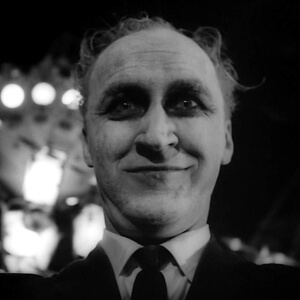 The entire film appears to live in that odd area, an overlap of skill and luck, intent and accident: Harvey and Clifford struggled to produce and distribute a movie outside of the Hollywood system, about a woman who is in the world but does not feel of it; Hilligloss radiates emotion, while other performers seem almost animatronic. The parallels, synchronicities, and paradoxes keep adding to an incalculable but considerable sum. “It came out fully formed,” Gould states, “in a vacuum.” And once Carnival was out, it slowly influenced generations of filmmakers, from George Romero to David Lynch to M. Night Shyamalan.
The entire film appears to live in that odd area, an overlap of skill and luck, intent and accident: Harvey and Clifford struggled to produce and distribute a movie outside of the Hollywood system, about a woman who is in the world but does not feel of it; Hilligloss radiates emotion, while other performers seem almost animatronic. The parallels, synchronicities, and paradoxes keep adding to an incalculable but considerable sum. “It came out fully formed,” Gould states, “in a vacuum.” And once Carnival was out, it slowly influenced generations of filmmakers, from George Romero to David Lynch to M. Night Shyamalan.
Twin Absences
“[Mary is] characterized at length by twin absences: the lack of desire for human companionship and her lack of interest in the spiritual…” Cairn observes. “What makes the film interesting is that we relate to Mary’s alienation from the various well-meaning or grubby individuals dogging her heels.” That people are continually touching Mary as she — and we — feel increasingly detached, is an irony almost magical in its effectiveness. Nearly all of those people are men, and while that might be simply a reflection of the time, it’s impossible not to find significance in it now.
“Mary is surrounded all the way through the film by men who are trying to explain things to her, or trying to work out what she’s playing at…” Anne Billson, an artist and critic, notes. “You could interpret it as a story of her trying to assert her own identity in the face of what society expects her to be.”**** And Mary is not what people expect, especially her attitudes about the church — “it’s just a place of business” — and her role as organist — “I regard it simply as a job” — which are points of discrimination for everyone she meets.
It’s easy to mark Mary’s attitude as sinful and the progression of events as punishment, but that’s rather unimaginative, and I doubt it was Clifford’s purpose; she is the most relatable character in the film, and not because it’s essentially a first person narrative. To me, it seems he’s saying something more obvious and overwhelming: earth is not our home, though we roam throughout and walk back and forth on it. It’s hell, or the warning of it. Perhaps that reads as dramatic, or depressing, but in this present disconnectedness, it feels like, as Gould says, “comfort food.”
__________________________________________
*All Herk Harvey and John Clifford quotes are taken from the Criterion Collection’s selected-scene audio commentary.
**All David Cairns are from his video essay, produced by the CC.
***All Dana Gould quotes are taken from his interview, produced by the CC.
****Anne Billson, in the Cairns video essay.

